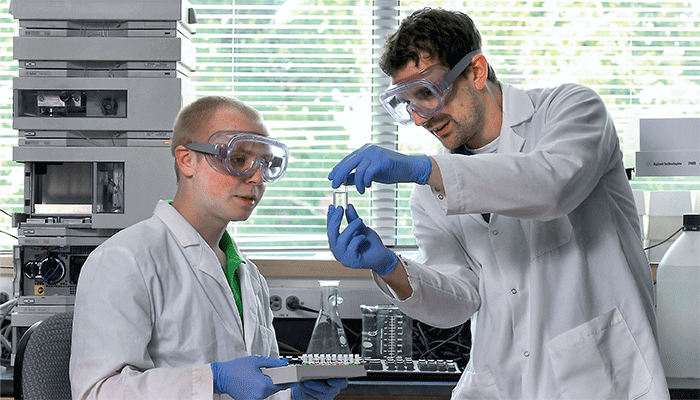James Grinias – in 2018, an assistant professor at Rowan University in New Jersey – was commended on The “Fab Forty” Power List for being “independently successful” and for “securing grants from the National Institute of Health (NIH) and the American Chemical Society (ACS), which is impressive for a new professor.” He is now an associate professor with research interests spanning liquid chromatography (LC) column and instrument technology, microfluidics, bioanalytical separations, and analytical chemistry education. So, what has Grinias been up to?
How has your career progressed over the past four years?
I would say the most obvious thing to note since 2018 is the COVID-19 pandemic, which had a major effect on my laboratory’s work in both positive and negative ways. We shut down for several months and operated with reduced capacity for several more as part of our university’s safety protocols. Although this was frustrating at times, it did provide time to think about the direction of our work and where I wanted to head once we re-opened. Extra time for writing while working remotely also gave me the opportunity to submit some proposals on new directions in capillary LC, which I am happy to announce were funded through the National Science Foundation (NSF) CAREER program and as part of a collaborative NIH project with Axcend LLC. We’ve been able to publish some of our early results on these projects and I’m excited about where we’re headed for the rest of 2022 and beyond!
Another major occurrence over the past four years has been the first complete personnel transition of my research group since starting in 2017. Of course, this happens in all academic labs but experiencing it as an advisor has been very different from when I was a research trainee. My original cohort of students has graduated, with some moving on to pursue doctoral degrees in chemistry, others now employed in industry, and one student working in a government lab. I am truly proud to see this next generation of separation scientists make positive contributions to the world. It has also been fun recruiting new students, teaching them about chromatography, and watching them grow as scientists.
What are you currently working on?
At the moment, I am really enthusiastic about the current direction of our various projects related to capillary LC. Using capillary LC for routine pharmaceutical analysis can have a significant benefit by reducing solvent and energy consumption, helping make our standard measurement techniques “greener.” A compact, portable instrument platform will also enable this technology to be employed in a variety of point-of-need settings. Finally, I am looking forward to examining more ways of applying both unidimensional and multidimensional capillary LC separations to characterize biopharmaceutical products.
What else do you enjoy about your current role?
In addition to my various research projects, I’ve tried to become more involved in service work within the separation science community through the American Chemical Society Subdivision on Chromatography and Separations Chemistry (ACS SCSC) and the Chromatography Forum of Delaware Valley (CFDV). The wide adoption of online meeting platforms over the past two years has helped reduce barriers to participation in these organizations and is leading to a more closely-knit global network of analytical scientists.
Do you have any major career goals for the future?
We have previously worked on the development of strategies for increasing the speed of analytical-scale LC separations of pharmaceutical products. I am looking forward to applying these same strategies to increase the throughput of capillary-scale LC separations for a variety of applications.
Any advice for young people entering analytical science?
The best advice I can give to anyone hoping to enter the field of analytical science is to get advice from as many people as you can! Everyone has had a different experience that led them to where they are today, so trying to learn from many different viewpoints can help someone refine their own path to success. Social media and email have made it easier than ever to connect with other scientists, so it’s important to take advantage of this opportunity, trying to learn what people (preferably those who currently have the job you may want someday) had to do to get there.
Do you know any analytical rising stars? For 2022, The Analytical Scientist will be returning to the 40 Under 40 format and nominations will be opening soon – so keep your eyes peeled





